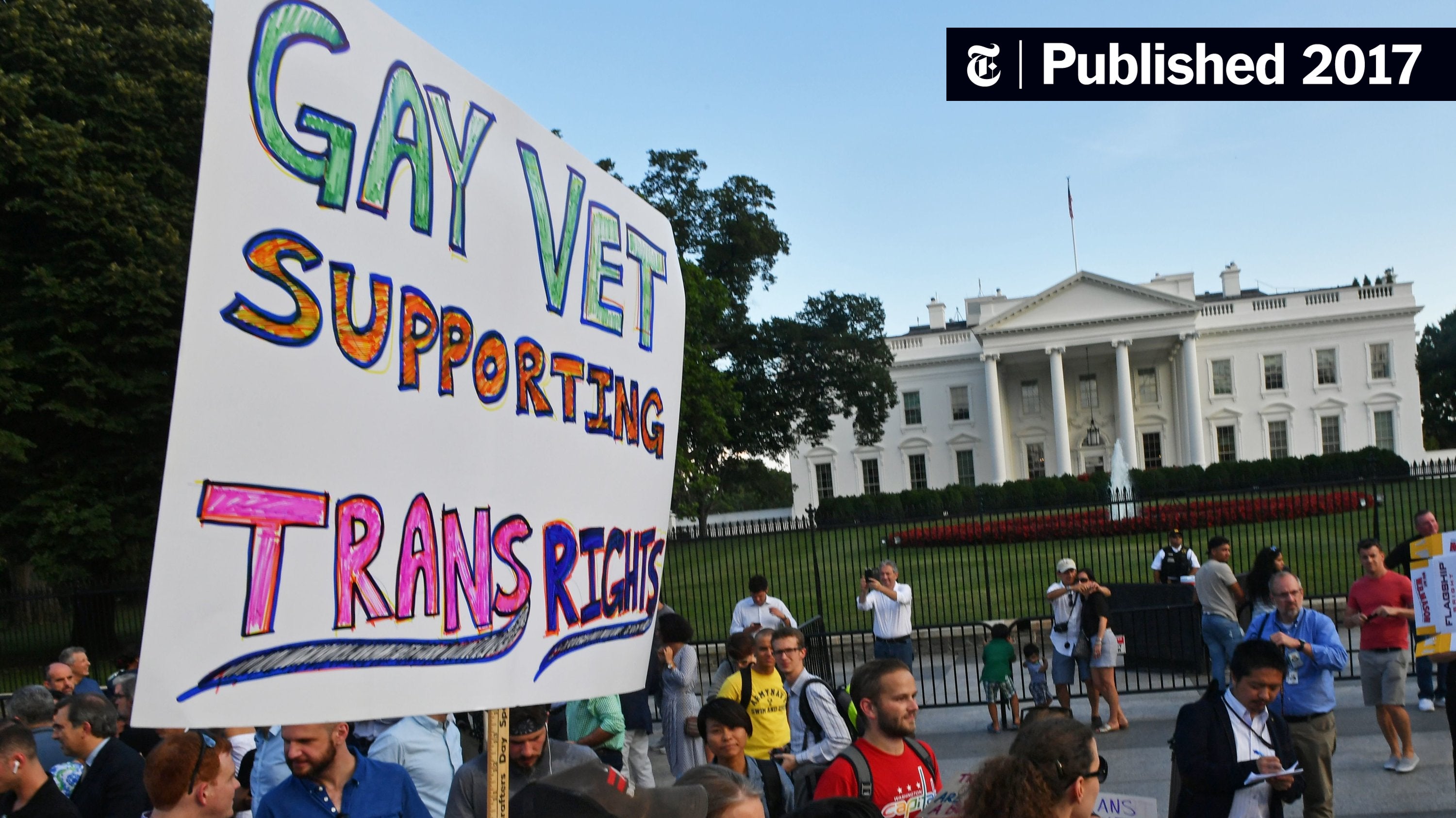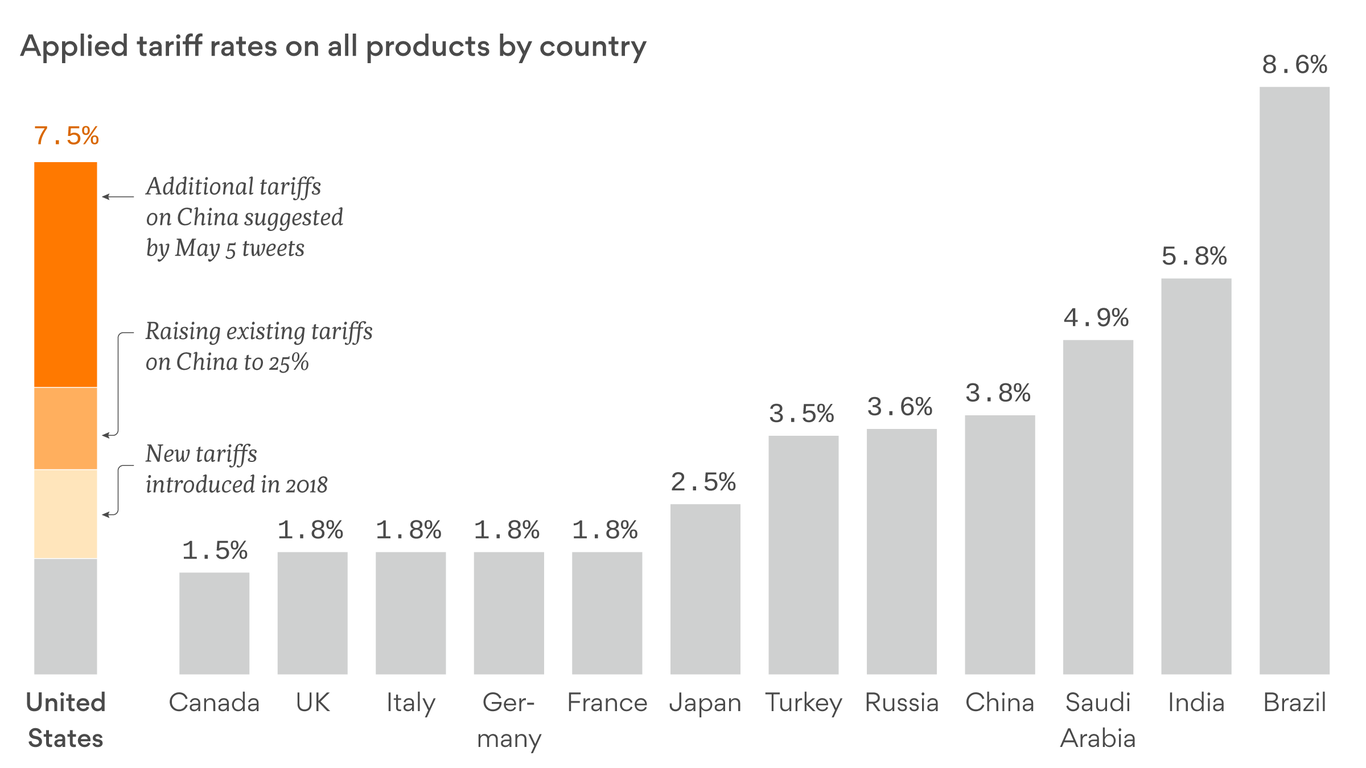The Transgender Military Ban: Unpacking Trump's Controversial Decision

Table of Contents
The Executive Order and its Rationale
On July 26, 2017, President Trump issued a memorandum effectively banning transgender individuals from serving in the U.S. military. The stated rationale behind the executive order, often cited by administration officials, centered on concerns about military readiness, the costs associated with medical transition, and potential disruptions to unit cohesion and combat effectiveness.
Arguments in favor of the ban often focused on the perceived physical and psychological demands of military service, suggesting that transgender service members might pose a disproportionate burden on healthcare resources and potentially hinder operational efficiency. They also pointed to the perceived need for a clear and consistent policy on gender identity within the military ranks.
However, these justifications faced significant criticism. Experts and advocacy groups argued that the ban was based on unsubstantiated claims and discriminatory prejudices, lacking any credible evidence to support the assertions regarding diminished military readiness. Many highlighted the successful service records of transgender individuals prior to the ban, emphasizing their contributions and dedication. Furthermore, critics pointed out the detrimental impact on morale and recruitment, as the policy sent a message of exclusion and intolerance.
- Specific wording from the executive order: The memorandum stated that the policy was necessary to "maintain military readiness, lethality, and unit cohesion."
- Quotes from Trump administration officials: Officials frequently cited concerns about the costs associated with gender transition-related medical care.
- Statistics on transgender service members (limited data publicly available): Precise numbers regarding transgender service members prior to the ban remain somewhat unclear due to privacy concerns, but estimates suggest thousands served openly or covertly.
- Expert opinions challenging the administration's claims: Numerous medical and military experts testified to the lack of evidence supporting the administration's claims.
The Impact on Transgender Service Members
The transgender military ban had devastating consequences for transgender service members. Many faced discharge from the military, losing their careers, healthcare benefits, and often, their sense of belonging. The immediate impact was felt through forced separation from service, often accompanied by significant emotional distress and financial hardship.
The long-term effects were equally profound. Many transgender veterans struggled to find civilian employment, access appropriate healthcare, and cope with the mental health challenges arising from discrimination and social stigma. Many reported increased rates of depression, anxiety, and PTSD, exacerbated by the ban's implications.
- Number of transgender service members discharged: Precise numbers are difficult to obtain, but reports indicate significant numbers of discharges.
- Impact on morale and recruitment: The ban negatively impacted morale amongst existing service members and deterred potential recruits from joining.
- Mental health consequences for affected individuals: Increased rates of suicide attempts and mental health issues were reported amongst those affected by the ban.
- Legal challenges faced by discharged service members: Many discharged service members faced legal battles to regain their benefits and recognition.
Legal Challenges and Subsequent Developments
The transgender military ban faced immediate and widespread legal challenges. Numerous lawsuits were filed by affected service members and advocacy groups, arguing that the ban violated constitutional rights to equal protection and due process.
Key organizations such as the American Civil Liberties Union (ACLU) and Lambda Legal played crucial roles in fighting the ban through litigation and public advocacy. The legal battles were protracted, with varying outcomes at different levels of the court system.
The Biden administration, upon taking office in 2021, swiftly reversed the Trump-era ban, reinstating the right of transgender individuals to serve openly in the military. This reversal marked a significant victory for LGBTQ+ rights and signaled a shift towards greater inclusion within the armed forces.
- Key court cases and their rulings: Several key court cases ultimately ruled against the ban, citing constitutional violations.
- Names of key advocacy groups involved: ACLU, Lambda Legal, and numerous other LGBTQ+ rights organizations played key roles.
- Summary of Biden administration's policy change: The Biden administration fully reinstated the right of transgender individuals to serve openly.
- Ongoing legal battles or related legislation: While the ban is officially overturned, related legal battles and legislative efforts continue to shape policy.
The Broader Context of LGBTQ+ Rights in the Military
The transgender military ban must be viewed within the broader historical context of LGBTQ+ rights in the military. For decades, LGBTQ+ service members faced discrimination, often serving in secrecy or under threat of discharge. The "Don't Ask, Don't Tell" (DADT) policy, repealed in 2010, represented a period of uneasy compromise, allowing gay and lesbian individuals to serve as long as they did not openly disclose their sexual orientation.
The transgender military ban represented a significant setback in the ongoing struggle for full inclusion. Comparing U.S. policy to that of other countries reveals a spectrum of approaches, ranging from complete inclusion to outright bans. The ban also significantly impacted public perception of the military's commitment to diversity and inclusion.
- Historical timeline of LGBTQ+ inclusion/exclusion in the military: A detailed timeline illustrates the long struggle for LGBTQ+ rights within the armed forces.
- Discussion of "Don't Ask, Don't Tell" policy and its repeal: DADT exemplifies the complex history of balancing military needs with LGBTQ+ rights.
- Comparison to other countries' policies regarding transgender service members: A global comparison provides context to U.S. policy.
- Impact on public perception of the military and LGBTQ+ rights: The ban had far-reaching effects on public opinion regarding both the military and LGBTQ+ issues.
Conclusion
The transgender military ban remains a potent symbol of the ongoing struggle for LGBTQ+ equality and inclusion. While the Trump administration’s justifications for the ban, centered on concerns about military readiness and cost, were widely criticized as lacking evidence and driven by prejudice, the policy had a devastating impact on the lives of countless transgender service members. The protracted legal battles and the eventual reversal under the Biden administration highlight the importance of persistent advocacy and the ongoing fight for equal rights. Understanding the transgender military ban requires understanding the broader context of LGBTQ+ rights in the military and the complexities of balancing national security with fundamental human rights. We encourage further research into the impact of the transgender military ban and the ongoing debate surrounding transgender service members to foster informed discussions and promote a more inclusive future for all.

Featured Posts
-
 Trump Tariffs Weigh On Infineon Ifx Sales Guidance Revised Downward
May 10, 2025
Trump Tariffs Weigh On Infineon Ifx Sales Guidance Revised Downward
May 10, 2025 -
 Hills 27 Saves Power Vegas Golden Knights Past Columbus Blue Jackets
May 10, 2025
Hills 27 Saves Power Vegas Golden Knights Past Columbus Blue Jackets
May 10, 2025 -
 Nhl Playoffs Oilers Vs Kings Prediction Best Bets For Tonights Game 1
May 10, 2025
Nhl Playoffs Oilers Vs Kings Prediction Best Bets For Tonights Game 1
May 10, 2025 -
 Edmonton Oilers Star Leon Draisaitl Hart Trophy Finalist And Exceptional Season
May 10, 2025
Edmonton Oilers Star Leon Draisaitl Hart Trophy Finalist And Exceptional Season
May 10, 2025 -
 Vegas Golden Nayts Oderzhivaet Pobedu Nad Minnesotoy V Overtayme Pley Off
May 10, 2025
Vegas Golden Nayts Oderzhivaet Pobedu Nad Minnesotoy V Overtayme Pley Off
May 10, 2025
